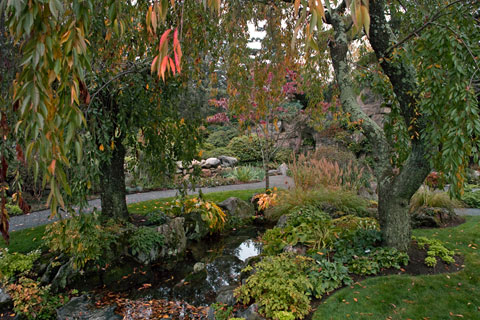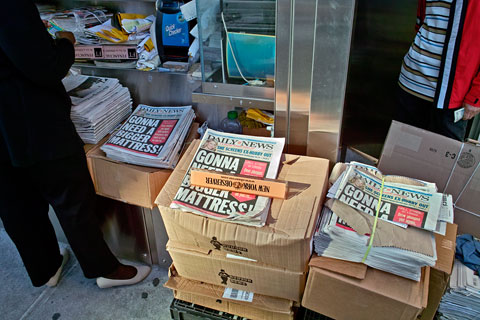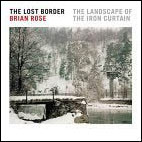Wednesday, October 29, 2008
Saturday, October 25, 2008
Wednesday, October 22, 2008
New York/Koudelka
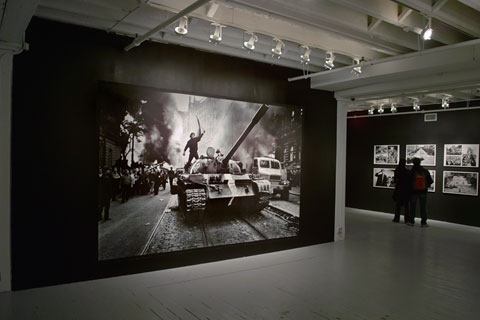
Invasion 68 Prague, Photographs by Josef Koudelka at Aperture Gallery (digital)
© Brian Rose
A few posts back I wrote about 1968 and Paul Fusco's photographs of the Robert Kennedy funeral train. Currently, at Aperture Gallery in Chelsea, is another exhibition dealing with 1968--Josef Koudelka's photographs of the Soviet invasion of Czechoslovakia, which brought to a brutal end what is known as Prague Spring, a fleeting period of blossoming freedom behind the Iron Curtain.
The exhibition features a series of images made by Koudelka over the course of one week when Soviet tanks entered the Prague and were confronted by (mostly) young protesters in the street. Koudelka was just starting out as a photographer, and these pictures represent a spontaneous response to unfolding events--events that he was a part of--even as he remained unflinchingly faithful to the narrative of what was happening all around him. As a result his images do not exhibit the stylized framing that one sometimes associates with the genre. There is a fluidity to them. Although certain compositions achieve dramatic effect, more often they are part of a flow of images, almost filmic in nature. And they remind me, a little, of the direct cinema of the '60s when documentary filmmakers participated in events as silent witnesses.
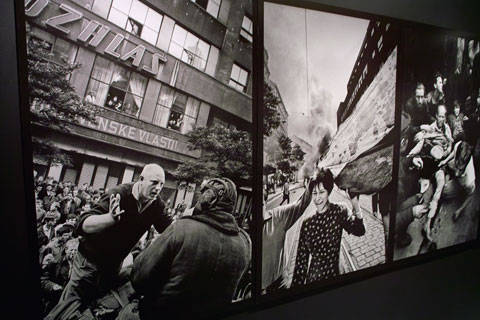
Koudelka at Aperture Gallery (digital)
© Brian Rose
Although the photographs show the bravery of the Czech people standing up to tanks and machine guns, heroism ultimately gives way to the futility of flesh and blood against the mechanized armor of the invaders. Koudelka'a images of swirling crowds pause here and there to capture the faces of Czech citizens and young foreign soldiers. Eventually, peaceful confrontation devolves into violence--fire and smoke rise from the streets. And the Czechs were defeated.
As much as one wants to celebrate the emergent skill of Koudelka, the bitter and gritty beauty of his photographs, the ultimate lesson of these images is that freedom is fragile and can be swiftly obliterated. It would be 21 years before a new Velvet Revolution emerged on the streets of Prague.
The Aperture exhibition is comprised of new inkjet prints, made from high resolution scans, which have a richness and texture different from silver prints and allow for large blow ups. Although I appreciate the qualities of vintage prints, I generally approve of these kind of reprintings, which often enhance and reveal detail and subtlety inherent in the images. Things can go wrong, of course, but in the right hands, the results can be stunning. They are here.
Saturday, October 18, 2008
New York/Williamsburg
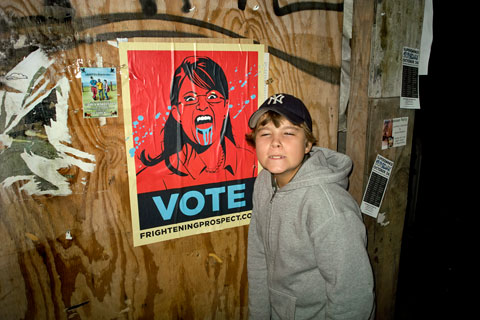
Brendan, my son, on Bedford Avenue (digital)
I'm back from a week upstate, and will resume lengthier posts shortly.
Update: Jenny did the poster.
Tuesday, October 14, 2008
New York/New Paltz
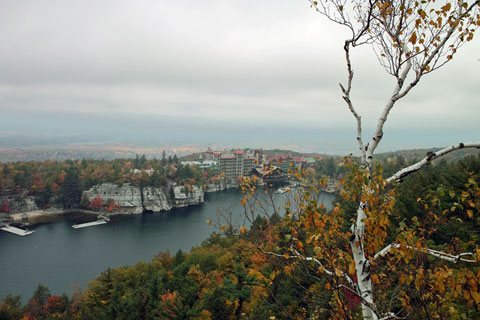
Mohonk Mountain House (digital)
A few days away from the city, we are at the Mohonk Mountain House near New Paltz, New York, up the Hudson River. This is the classic view of the historic lake and hotel, a Catskill retreat that dates back more than a hundred years.
It was cool and foggy this morning, but has brightened up considerably. Fall colors are vivid.
Saturday, October 11, 2008
Wednesday, October 08, 2008
New York/RFK
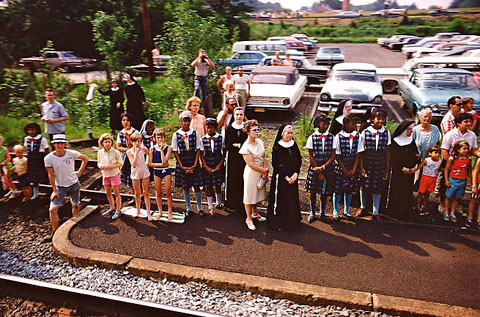
Paul Fusco, RFK funeral train, 1968
I was 14 years old in 1968, undoubtedly the most tumultuous year since World War II--at least in the western world. Although I was too young to be seriously engaged in what was going on, I was acutely aware of the epic events occurring--Vietnam, civil rights, the assassinations of Martin Luther King, Jr. and Robert F. Kennedy, and the violent end to Prague Spring in Czechoslovakia.
Two exhibits I visited recently in New York touch on events of 1968: Paul Fusco at Danziger Projects (show closed October 4) and Josef Koudelka at Aperture. Fusco photographed Robert Kennedy's viewers of the funeral train as it made its way from New York to Washington, D.C.
I remember well watching the railroad cortege on television as it passed the thousands of people who lined the tracks. I also have a distinct memory of a brief bit of video shown once, in which a train coming from the opposite direction mowed down a number of people standing on the tracks adjacent to the funeral train.
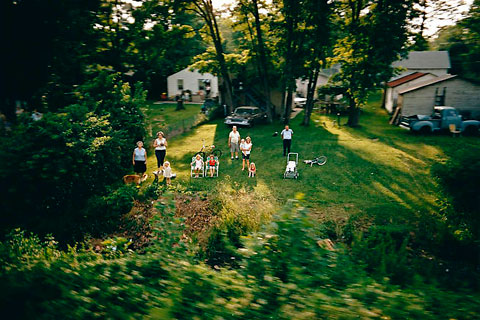
Paul Fusco, RFK funeral train, 1968
When I first saw the Fusco pictures, I was immediately swept back to the sorrow and apprehension of that time, to the fear and uncertainty that I have never been able to shake, a fear that rises to the surface today as a black man carrying the hope embodied in the Kennedy brothers nears the presidency, as earthshaking economic events rumble around us.
Fusco's photographs were very simply made. On assignment from Look magazine, he rode the funeral train and did what he could from a fixed vantage point. He aimed his camera at the crowds and small knots of people standing at relaxed attention, some waving, some saluting, troubled, saddened faces, staring, transfixed, as the rail coaches slid by.
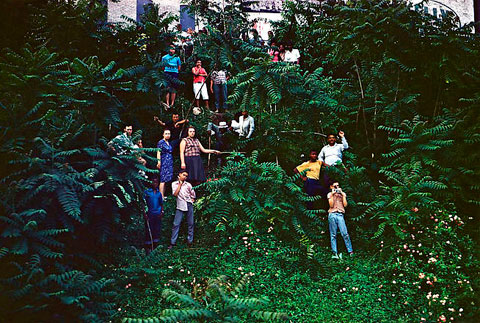
Paul Fusco, RFK funeral train, 1968
Fusco made his photos on 35mm Kodachrome, a vibrant slide film that stands up well over time unlike early color negative film, which tends to shift color and fade. As a result, these images from 40 years ago seem fresh and immediate, which makes them emotionally all the more jarring. The people depicted came "as-they-were" in a colorful array of flowered prints and decidedly unfunereal stripes and plaids. It was June and people came in shorts, bathing suits, sandals and bare feet. And although it was 1968, one sees scant evidence of the psychedelic trappings that so dominate our collective memory of the era.
The train passed through rural areas, small cities like Trenton, and big ones like Philadelphia and Baltimore where the faces are mostly black, people standing in scruffy backyards and vacant areas along the tracks. Some of these neighborhoods were in the midst of violent upheaval as racial frustrations boiled over after the murder of Martin Luther King. Fusco's pictures, while freezing the momentary unity of grief, also reveal the racially segregated nature of a society coming apart at the seams.
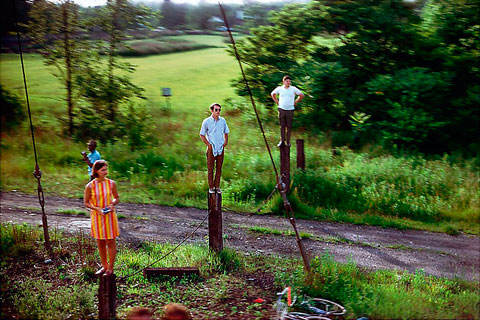
Paul Fusco, RFK funeral train, 1968
Because the train remained in motion, most of Fusco's photographs were necessarily made on the fly. They are fleeting glimpses, poignant, abbreviated moments of individual solitude among crowds. Fusco focused on the motionless people, rotating his head and camera slightly to stay fixed on his subjects, as the train moved horizontally. The blurring of the surrounding landscape further isolates the figures and creates a model-like hyper-reality, akin to recent narrow focus imagery created in Photoshop.
The images have a posed quality as well, due to the fact that people had staked out viewing positions, sometimes awkwardly balancing on steep embankments or even standing on elevated objects. As the train went by they looked intently at the coaches and often their eyes met the gaze of the photographer. In Fusco's photographs this relationship creates a strange and compelling phenomenon--they seem to look at us as we look at them. Do we recognize ourselves?
***
Paul Fusco's photographs have been collected in a handsome book, RFK, published by Aperture. It tries to be both a tribute to Bobby Kennedy and an art photo book, which I think is a little forced. The book starts with pictures not taken from the train of the memorial service held in St. Patrick's Cathedral and ends with the funeral in Washington. I would be happier without these bookends.
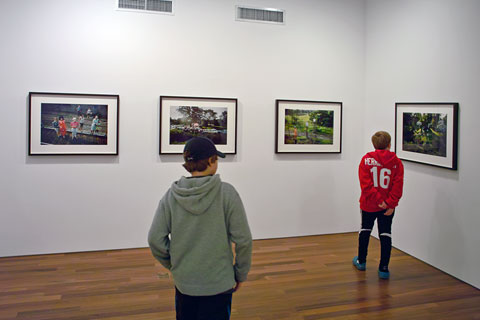
Paul Fusco at Danziger Projects • Brendan, my son, at left (digital)
The images as printed in the book, however, are nicer than the gallery prints, which are somewhat harsh and over saturated. The slightly more muted tones in the book seem more natural to me. Kodachrome is a punchy color material, but I don't think prints have to mimic the straight slide film.
Next, a look at the Koudelka exhibit.
Monday, October 06, 2008
New York/14th Street

East 14th Street
Without comment.
I've been busy lately, but have several posts coming up. Saturday I visited three exhibits in Chelsea: Joel Sternfeld, Josef Koudelka, and Paul Fusco. The latter two deal with tragic and tumultuous events in 1968. Sternfeld's work is new and majestic. I'll write soon about all of these.

